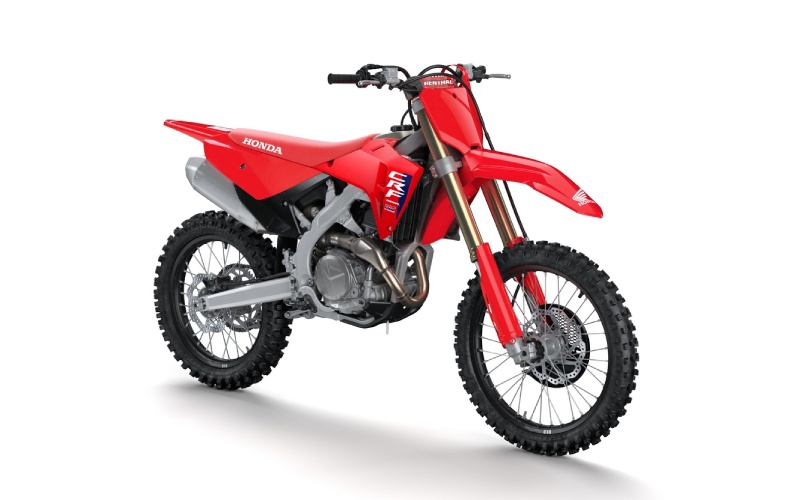Master Corner Speed with HSTC and Showa Suspension Setup in the 2026 Honda CRF450R near Webb City, MO

Jay Hatfield Motorsports of Joplin - Master Corner Speed with HSTC and Showa Suspension Setup in the 2026 Honda CRF450R near Webb City, MO
Corner speed wins races. Riders who can carry momentum through ruts, sweepers, and off-camber entries save energy and make passes without taking unnecessary risks. Honda bakes that advantage into the CRF450R with two standout technologies—Honda Selectable Torque Control (HSTC) and the 49mm Showa® spring fork—working together to keep the bike planted, predictable, and quick to settle. If you’re dialing in for local motos, from hardpack weekdays to loam-heavy weekends, understanding how these systems complement each other pays off in cleaner lines and faster exits.
HSTC gives you three settings on the left bar to fine-tune how the bike responds as the rear tire approaches spin. Rather than feeling like a blunt-cut power limiter, it subtly reshapes delivery to keep the rear hooked up when you’re reapplying throttle at lean or cresting small chop. On tracks with blue-groove entries, a higher HSTC setting can let you open earlier without breaking the rear loose; when racing in loam, reducing HSTC can restore the crisp edge you want for driving past the braking bump zone. Pair that with engine mode selection—Standard, Smooth, or Aggressive—and you have a matrix of setups that let you chase feel in small, controlled steps.
Of course, electronics shine brightest when suspension is in the window. The Showa® fork and Pro-Link® Showa® rear shock give you 12.2 inches of travel at both ends, but it’s the damping character that really changes corner behavior. Too soft on compression and the front will dive, overloading the tire and forcing mid-corner corrections; too firm and the bike will skate across chop, never truly loading the carcass. Thoughtful, incremental adjustments—plus sag set correctly—help the chassis take a set sooner, so you can aim for earlier throttle while staying inside your rut.
- Set rider sag first: Aim for a consistent baseline so clicker changes are meaningful and repeatable from practice to race day.
- Map for conditions: Use Smooth with higher HSTC on slick entries; go Aggressive with lower HSTC when you need more punch in deep loam.
- Balance fork and shock: If the front washes mid-corner, add a touch of compression or slow rebound; if it pushes wide on exit, check rear sag and rebound to keep the tire driven.
- Verify tire pressures: MX33s respond noticeably to small pressure changes; confirm hot pressures after a few laps to maintain feel.
As you refine the bike, leverage the CRF450R’s chassis updates—revised tripleclamps, axle, and steering stem—to your advantage. The front end communicates traction cues clearly when set up properly, and the single-pipe exhaust’s centralized mass helps the bike transition cleanly from tip-in to mid-corner support. The hydraulic clutch reduces forearm fatigue, making it easier to feather power delivery when line choices get tight and technical. Keep your changes small and record your settings; a simple notebook that tracks temperature, moisture, and the clicker map you used will help you repeat winning setups and avoid chasing your tail when a track flips from slick to tacky between motos.
Jay Hatfield Motorsports of Joplin supports riders who want a methodical path to faster laps. If you’re building a cornering plan for the next series, our team can walk you through baseline sag, explain how HSTC interacts with engine modes, and suggest gearing tweaks that sharpen exit drive without upsetting traction on choppy straights—serving Carthage, Webb City, and Carl Junction with the hands-on, race-minded approach that keeps you progressing.
Frequently Asked Questions:
How should I choose between HSTC settings for different track surfaces?
Use higher HSTC when the entry is hardpack or marbly to keep the rear settled as you roll on; drop to a lower setting for deeper loam or sand where you want more immediate drive.
Which engine mode pairs best with HSTC for rutted corners?
Many riders like Smooth mode with a mid-to-high HSTC setting in deep ruts—throttle transitions feel gentler, so the chassis stays loaded and tracks where you point it.
How do I know if my fork compression is too soft for corner entries?
Excessive dive under braking, a vague initial turn-in, or repeated mid-corner line corrections suggest you should add a click or two of compression and recheck sag.
What’s a good starting point for tire pressures on MX33s?
Start near common MX baselines, then confirm hot pressures after a few laps. Increase slightly for sharp square-edge bumps; reduce a touch for more carcass compliance in loam.






